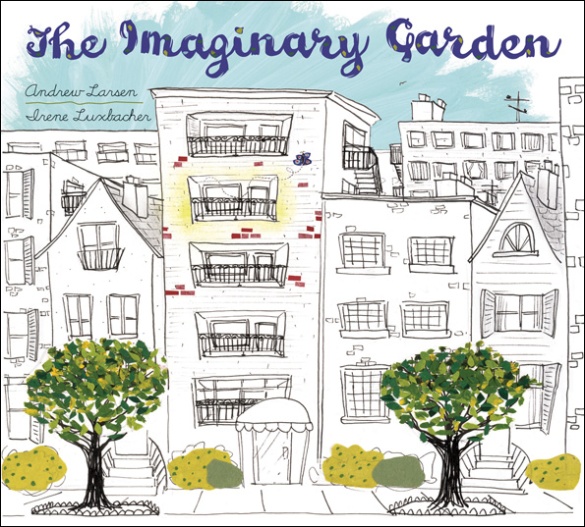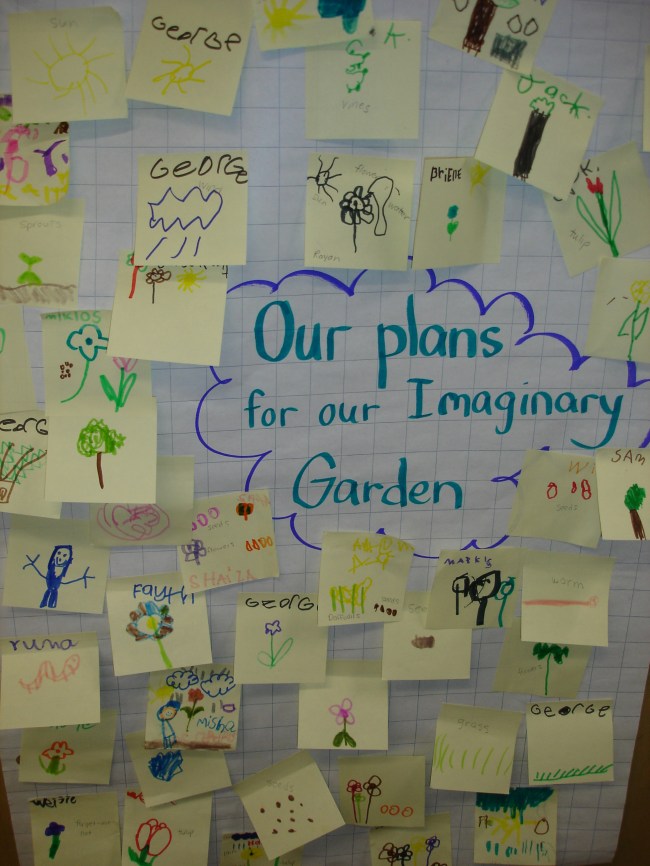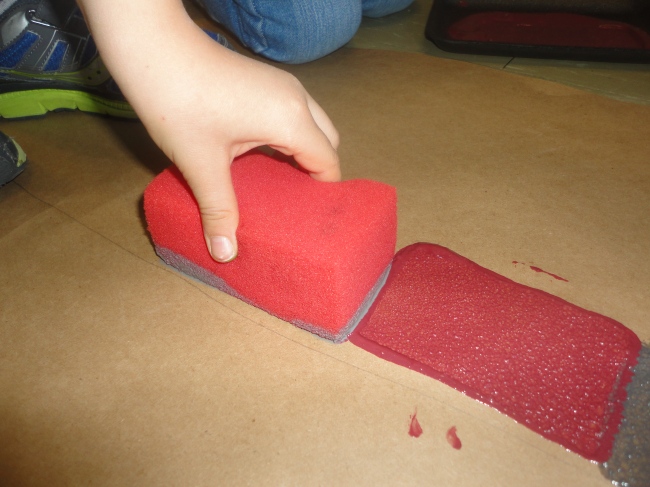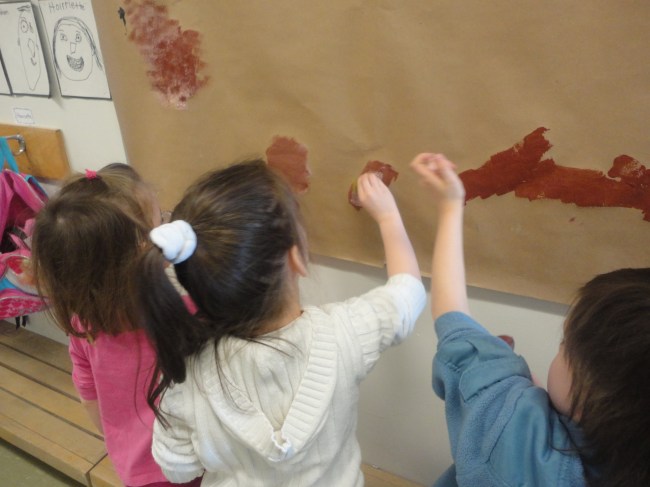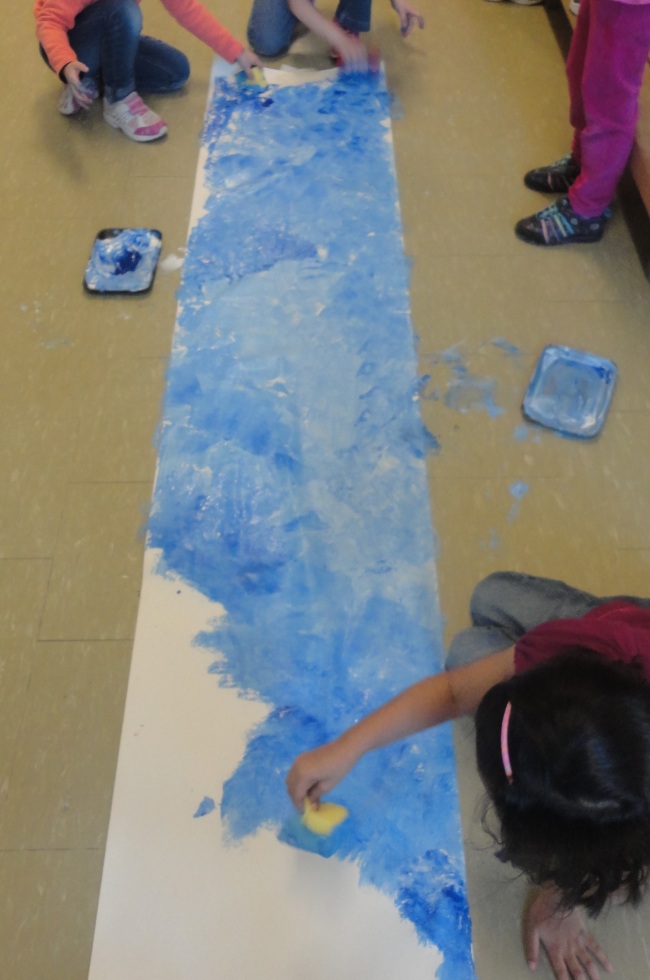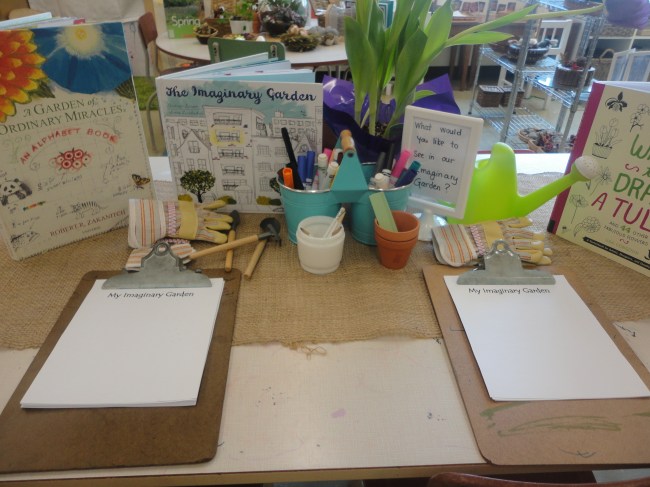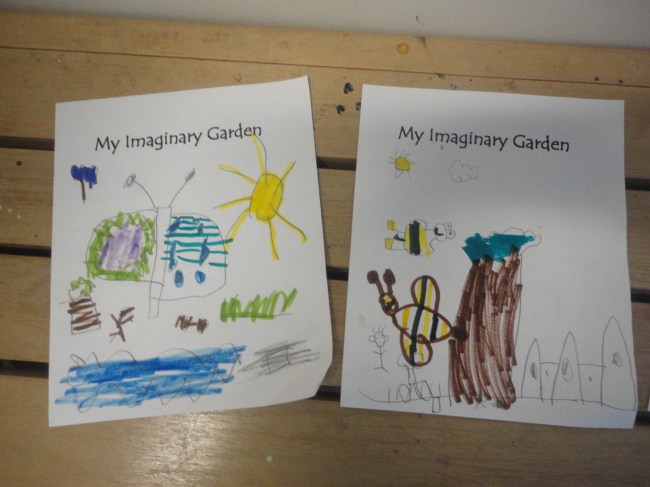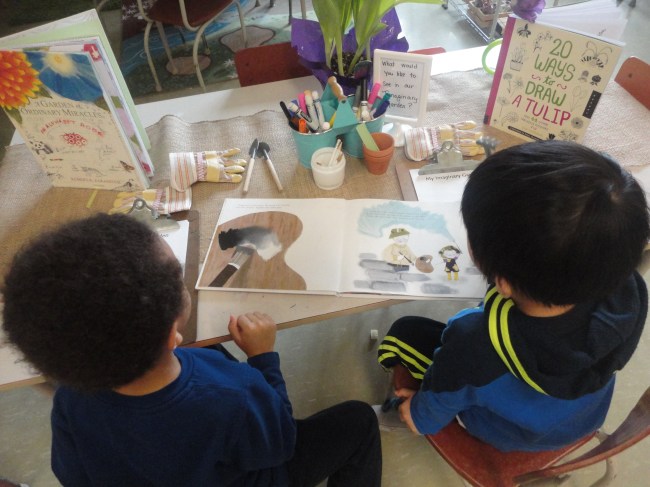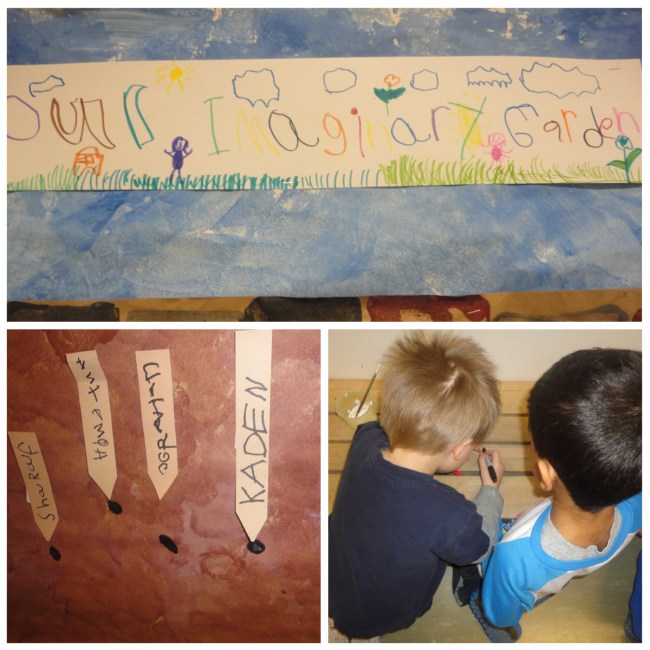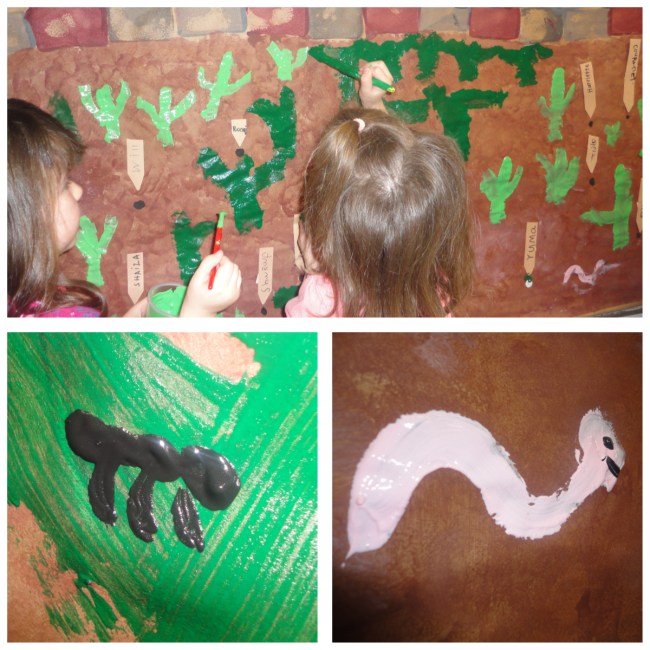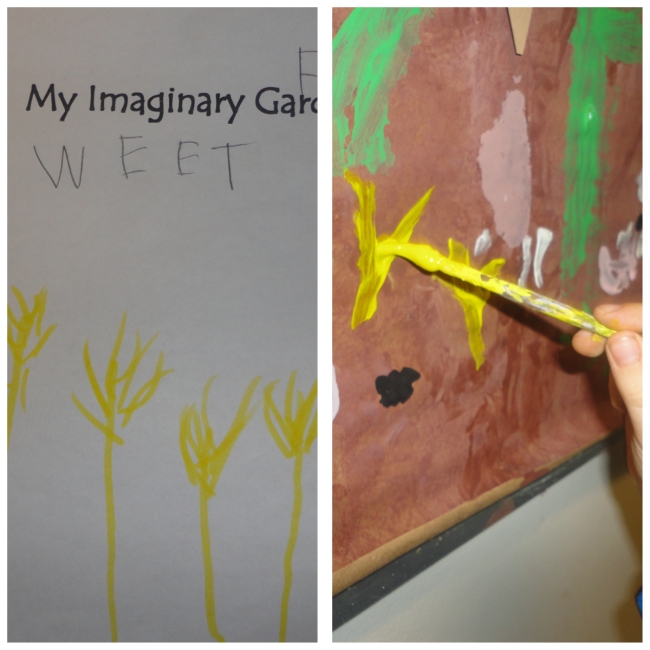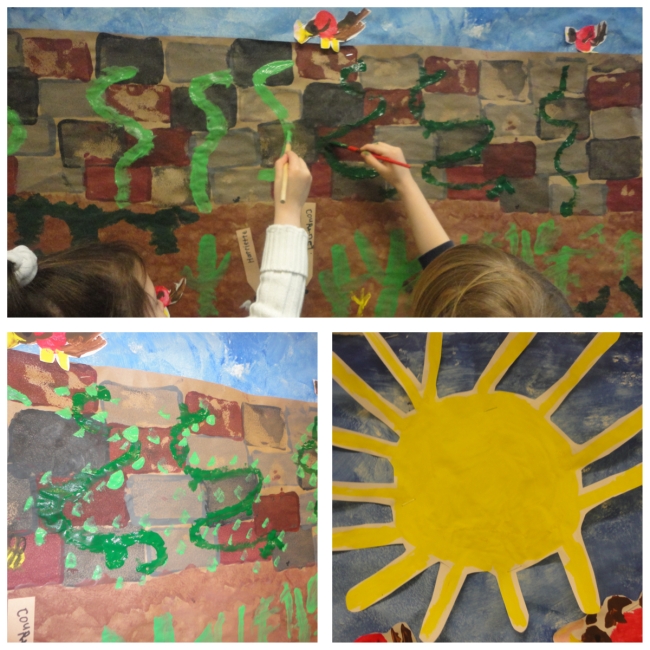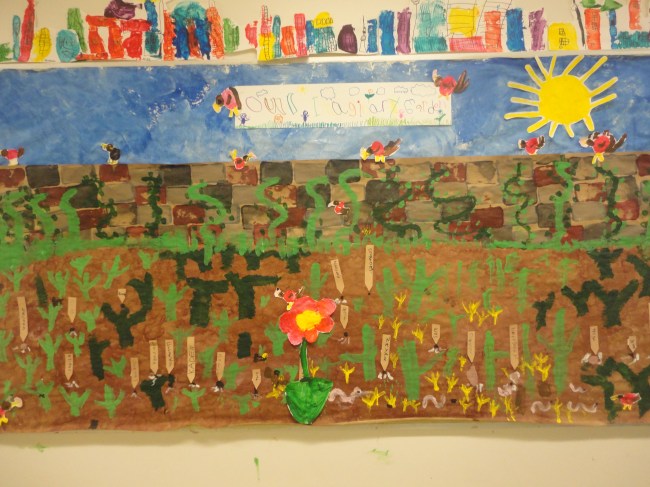As I have mentioned previously, the children in our class have been curious about gardens lately (check out my post about our Imaginary Garden). One of the things we have been wondering about is different types of gardens: rock gardens, flower gardens, fairy gardens, etc. As a result, we decided to create a Zen Garden provocation at the sand table:
To give the children some background on Zen Gardens, we looked up pictures online and I found a Youtube clip that showed the process of working in and maintaining a zen garden, which the class was quite fascinated by. The children were quite interested in the designs that were created in the gravel (in our case, sand) and noticed how quiet and still the garden was. We also talked about keeping the garden free from clutter and garbage and the idea that before making designs, it was important to start with a clean surface of sand. This meant using a hand-held brush (small broom) to brush and comb the sand. While watching the children at the centre, I was struck by how seriously they took this initial step – brushing and smoothing the sand in a slow, calm manner.
Initially, the children had difficulty making designs in the sand. Some children were frustrated that they were not able to create the patterns or designs they had envisioned. With practice and reflection (during group sharing time) we discovered that in order to make a clear pattern, the creator had to use the rakes very gently/lightly and slowly. This added to the purposeful work that was happening when the children were engaged here.

Here are some of the children’s creations, which they were certainly quite proud of!
One of my favourite gardens was created by a JK boy in my class. He had been coming to the garden for a few days but had either stood back and watched his classmates or worked in a very small corner of the sand bin. On this particular day, he worked with one other student and then by himself to create his masterpiece:
A.F.: This is my Zen Garden. I made a bridge – the stones are walking on the bridge. And I put in lots of plants and grass. The sticks are the trees. And the rocks are the daddies carrying the babies around. There are lots of daddies in the garden today. I even made designs with my rake! I had to work really slowly and quietly.
The stones going for a walk on the bridge…
The plants and bushes and grass…
The daddy rocks carrying the baby rocks…
As with any provocation, the success of our Zen Garden came from the schema building, questioning, problem solving, and reflection that we engaged in throughout – both as a whole class and individually or in small groups at the centre itself. Our Zen Garden is a calm space that gives the children a quiet place to create with loose parts. The complexity of the gardens is increasing daily, especially now that the children have gotten the hang of design-making with the rakes, so I’m excited to see what happens next!

























